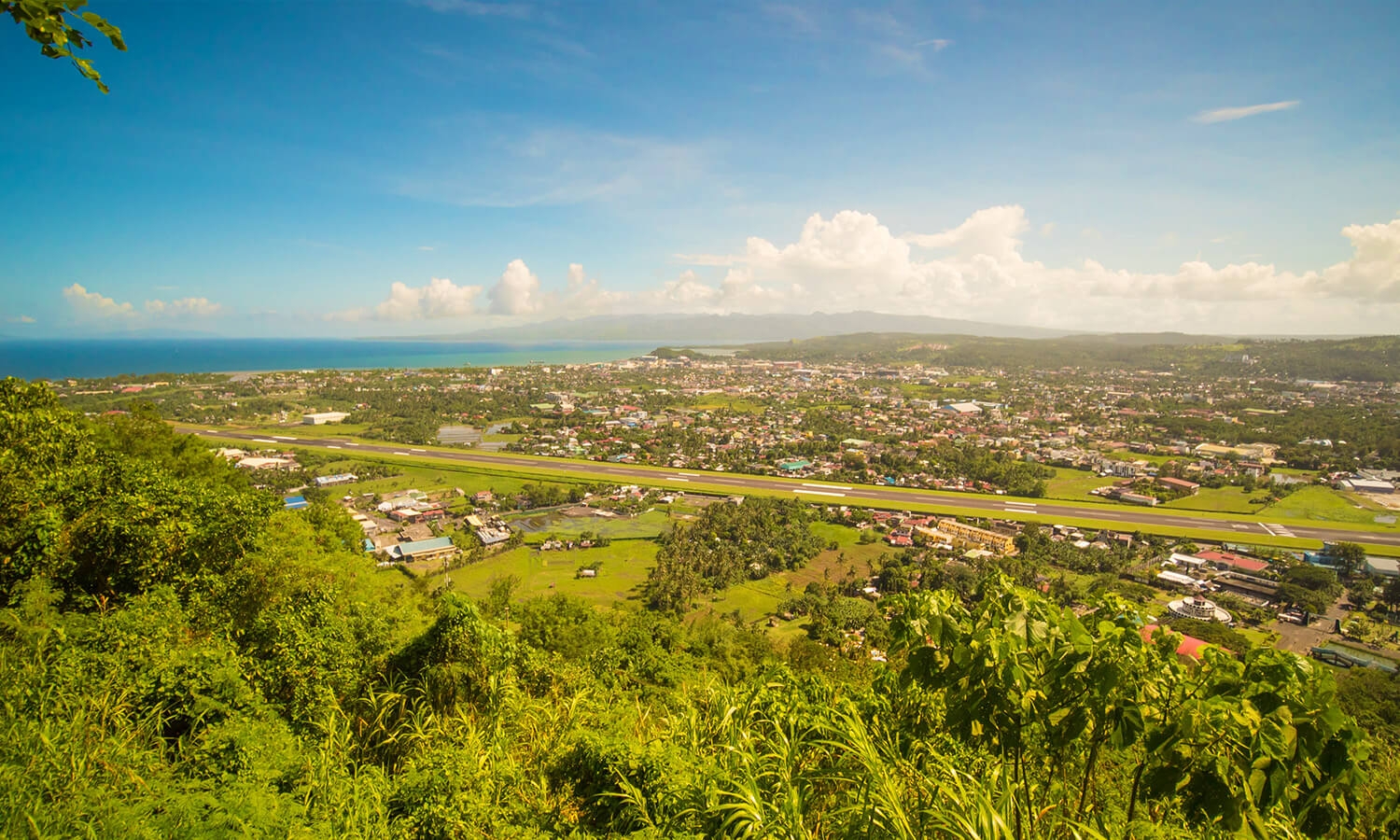
Known as the largest developing city in Region V (Bicol Region), Legazpi City is the capital of Albay Province and the region's major hub for commerce and economic activities and home to the Mayon Volcano. With its agricultural roots being a barangay called "Sawangan," where its native inhabitants are fisherfolk and farmers, Legazpi City is also a major site of developing Christianity.
When visiting Legazpi City, don't waste your chance of bonding with nature! If you are a fan of rafting and swimming, you should experience going to the Quitinday Underground River to explore natural caves and small waterfalls. Afterward, you can also drop by the Calabidongan Cave and take a cliff dive into pristine aquamarine waters.
If you are an adrenaline fanatic, you should give Lignon Hill Nature Park a chance where you can find a 320-meter long zipline at 156 meters high hill. Afterwards, do not waste the opportunity to go to the Kapit Tuko Trail (or Lizard Grip Trail), which will be one of the most memorable 10 minutes of your life.
If you love sightseeing while walking (or even running), you should probably try walking in this boulevard and grab a bite in one of the many restaurants and cafes in the vicinity.
Usually the topmost tourist attraction in every Legazpi City itinerary, Mt. Mayon is truly a sight to behold. Dubbed as the volcano with a perfect cone shape, Mayon Volcano is one of the flagbearers of Bicol Tourism. If you are curious enough to go closer to this active smoke-puffing volcano, you can take a hike in its base, ride an ATV, or ride a jeepney tour that will take you to the observatory.
Set with the beautiful Mt. Mayon in its backdrop, this famous crumbling brick church has been the setting for several thriller movies that will awe your eyes in its natural beauty but will also intrigue your imagination with its quiet mystery. Most visitors enjoy taking pictures in this Franciscan church built in 1587, destroyed during the 1640s, then reconstructed in 1724. Aside from taking amazing photos in this famous tourist spot, you can also explore its haunting history.
Truly a work of nature, this waterfall is situated between two volcanoes. To get to Vera falls, you will have to drive by several towns to go there, but its breathtaking beauty and fresh waters will be worth it after you sweat by hiking 100 jungle stairs on a hot day in the Philippine climate.
Aside from being a timeless piece of history during World War II and the Japanese regime, this structure will get the hairs in your arm rising and will get your heart and pulse racing as you navigate your way through them. Dug from 1941 used to stretch to the city hall, but due to natural weathering and soil erosion, it is not as long anymore but still worth the effort to visit for making your way through its tunnels that are only 3-4 feet tall.
Since the Philippines have changing weather, deciding the best time to travel to Legazpi City is around December to January to enjoy chill temperatures from 27°C to as low as 22℃ at night (and the water from 25°C and 29°C). But if you don't mind traveling in the summer months to enjoy warm waters and limited rainfall, you can visit after May to avoid the peak of high temperatures, which can sometimes reach 31°C - 34℃.
Planning to visit Legazpi City in the next coming days? Checkout the weather in Legazpi City.



Going to Legazpi City is easy for it has a convenient location in the central part of the region, hence its name "The gateway to Bicol." Since it is accessible, you will not run out of transportation choices, and you can have your quick getaway via land or air.

If you come from Manila or nearby Luzon provinces, you have the choice to ride a bus that is either air-conditioned or ordinary fare, for several bus lines offer daily trips to and from Legazpi City. You can pick which point of entry best fits your location with several choices. Most travelers can access most bus lines bound for Legazpi Grand Central Terminal from EDSA-Cubao, LRT-Buendia, Ermita, Alabang, or Araneta Center Bus Station. Do not forget to note that this mode of travel will usually take 9-12 hours.
Relatively more convenient than land travel, traveling by air, though it may cost more, is the most convenient (and fastest) way to come to Legazpi City. Compared to 9-12 hours, travel time by plane only takes 55 minutes to an hour. However, the Legazpi Domestic Airport has daily flights to and from Manila and is a non-international airport in Luzon. If you are from overseas, you might have to take a detour to Manila first.


Once you arrive in Legazpi City, there will be little to no problems getting your way around this majestic city. Numerous public utility vehicles are available everywhere, from tricycles to taxis. Be familiar and mindful of the designated locations and routes of jeepneys and UV Express Vans in planning your itinerary to save time and resources.
No review available.